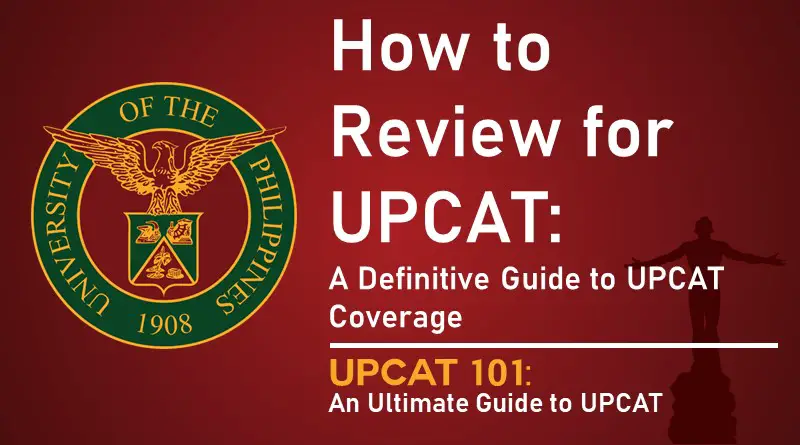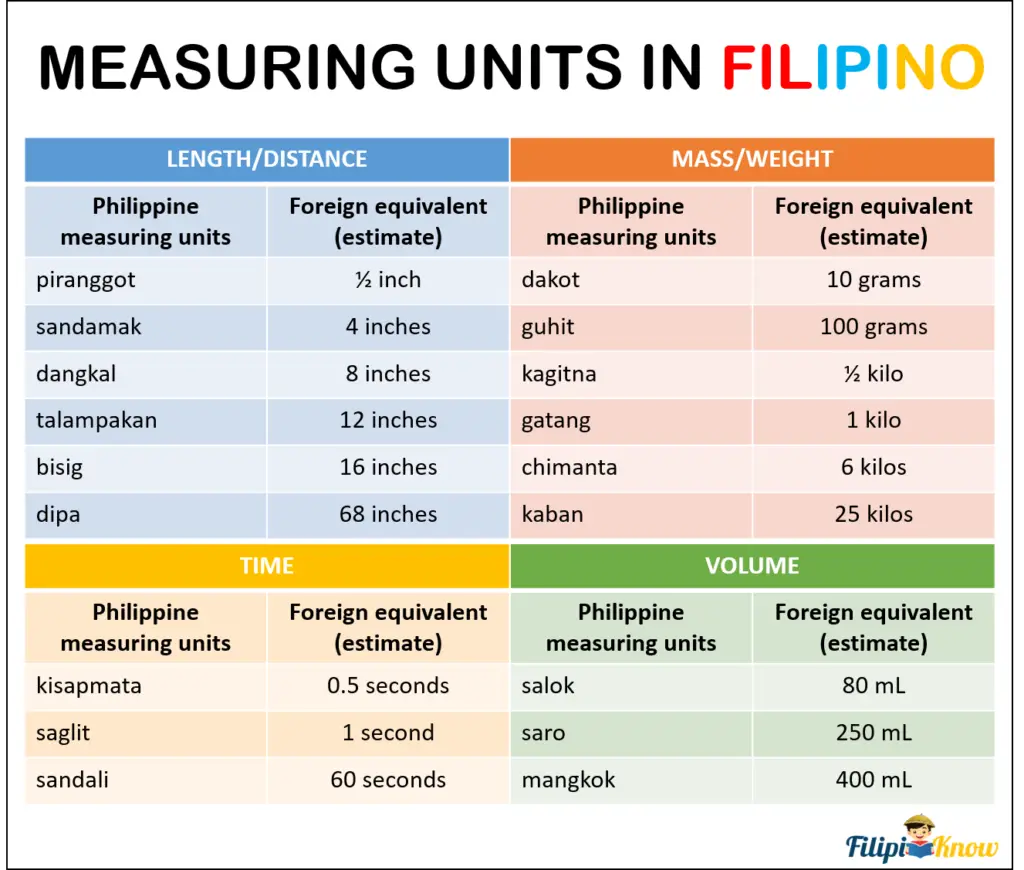UPCAT Coverage: What To Review for UPCAT

The University of the Philippines College Admission Test (UPCAT) is one of the Philippines’ most important and well-known college entrance exams. Averaging nearly 100,000 applicants from over the Philippines yearly, less than 15% of the examinees successfully gain admission into UP.
The basis for admission into UP is the University Predicted Grade (UPG) which generally consists of your high school grades (40%) and your UPCAT score (60%). With a significant portion of your UPG coming from your UPCAT score, with tight competition and limited slots, you must do everything possible to prepare for the UPCAT.
In this article, we’ve compiled the UPCAT coverage based on the experiences of recent UPCAT takers. If you want to gain the upper hand in UPCAT, read on!
Table of Contents
The Four Subtests
The UPCAT consists of four subtests: Mathematics, Science, Language Proficiency, and Reading Comprehension– everything you’ve learned in high school.
The UPCAT tests your knowledge of these subjects and your physical and mental endurance in a five-hour-long exam session.
1. Mathematics

The Mathematics subtest can be further subdivided into the following subjects: Arithmetic and Number Sense, Algebra, Geometry, Trigonometry, and Statistics.
a. UPCAT Math subtest coverage
Here are the topics commonly covered in the following subjects:
Arithmetic and Number Sense
- Real Numbers and Imaginary Numbers
- Operations on Integers
- Order of Operations (PEMDAS)
- Factors and Multiples
- Divisibility Rules
- Fractions and Decimals
- Operations on Fractions and Decimals
- Percent
- Ratio and Proportion
Algebra
- Algebraic Expressions
- Laws of Exponents
- Logarithms
- Polynomials
- Special Products and Factoring
- Linear Equations
- Quadratic Equations
- Rational Expressions
- Radical Expressions
- Inequalities
- Functions
- Cartesian Coordinate System
- Sequence and Series
- Using Algebra to Solve Word Problems
Geometry
- Introduction to Geometry: Undefined Terms, Definitions, Postulates, and Theorems
- Angles: Classification and Properties
- Triangles: Classification and Theorems
- Conversion of Units of Measurement
- Perimeter and Area of Plane Figures
- Volume of Solid Figures
- Circles
- Right Triangles
Trigonometry
Statistics
Calculus
Logic
b. UPCAT Math subtest based on experience
The topics list may look daunting initially, but you shouldn’t be afraid. According to past UPCAT takers, the Math subtest mostly comprises Algebra questions. This means that the number of questions for the following subjects is relatively few compared to Algebra: Geometry, Trigonometry, Statistics, and Pre-/Calculus (in descending order of dominance in the subtest).
However, it would be best if you didn’t overlook or give less time to study these subjects. Remember: the UPCAT will test everything you’ve learned in high school. Make sure to understand at least the basics of each topic listed above. Even if a subject only has 1 question in the UPCAT, that 1 point might be the deciding factor in you passing the UPCAT.
The UPCAT changes every year, and while it’s essential to note important trends in previous exams, it’s also important to expect the unexpected. If the Math subtest contains questions in Filipino, here are some of the most common Filipino measuring units that may appear:

c. Tips for studying
- Master the basics. You don’t have to study in-depth every topic or subject. Just focus on the basics for every topic and master them. Make sure you can answer fundamental math problems for each of the topics.
- Practice basic arithmetic. Calculators are not allowed in the UPCAT, so expect to do everything manually. Don’t worry, though– you’ll be given some scratch papers.
- Derive and understand. Sometimes, memorizing a formula or a math law/theorem isn’t helpful. To fully grasp a concept, take the formulas, and understand how they were derived. For theorems or laws, know what they’re used for and why. This can also help you when you’re in a pinch and forget the formula during the exam.
- Practice, practice, practice! This is the most effective studying method when it comes to math. Pull out your old math exercise books from high school and solve as many problems as possible. This is a life-saving tip for people who aren’t proficient in math (like me!).
Check out these printable UPCAT Mathematics learning aids:
- UPCAT Math Printable Summary/Review Notes (Available Now!)
- UPCAT Math Printable Flashcards (Available Now!)
- UPCAT Math Printable Mock Exam + Answer Key (Available Now!)
2. Science

The Science subtest can be subdivided into five portions: Earth Science, Biology, Chemistry, Physics, and Astronomy.
a. UPCAT Science subtest coverage
Here are the topics commonly covered in the following subjects:
Earth Science
- Introduction
- Earth’s Vital Statistics
- The Layers of the Earth and its Composition
- Rocks and Minerals
- Depositional Environments and Associated Landforms and Waterforms
- Basics of Stratigraphy
- Fossils and the Geologic Time Scale
- Plate Tectonics
- Earthquakes
- Volcanoes
- Climate, Weather, and the Atmosphere
Biology
- Introduction
- Properties of Life
- Biomolecules
- The Cell
- Cellular Metabolism
- The Central Dogma of Biology
- Biological Diversity
- The Theory of Evolution
- Genetics: The Study of Inheritance
- Animals: Form and Functions
- Plants: Form and Functions
- The Principles of Ecology
Chemistry
- Introduction
- Matter
- Atoms
- The Periodic Table of Elements and Periodic Trends
- Compounds
- Gases
- Chemical Reactions
- Chemical Kinetics
- Chemical Equilibria
- Acids and Bases
- Thermochemistry
- Nuclear Chemistry
- Concentration of Solutions
- Organic Chemistry
- Biochemistry
Physics
- Introduction
- Scalar and Vector Quantities
- Kinematics
- Relative Velocities
- Laws of Motion
- Friction
- Work, Energy, and Power
- Momentum and Impulse
- Fluid Mechanics
- Waves and Optics
- Electricity and Magnetism
- Thermodynamics
- Nuclear Physics
- Introduction to Relativity
Astronomy
- Introduction
- A Brief History of Astronomy
- The Origin of the Universe and Solar System
- The Solar System and its Planets
- How the Earth Was Formed
- The Motions of the Earth
- The Motions of the Moon
- Other Celestial Bodies in Space
b. UPCAT Science subtest based on experience
Based on past UPCATs, the Science subtest usually has an even distribution of questions for all subjects. However, some UPCAT takers say there is a heavy focus on Earth Science, so take note of that.
Expect a few objective-type questions and more application-based questions. This means that questions in those subjects are more likely to test your comprehension of ideas and concepts when applied in real-world situations than just questions that require memorization.
Also, expect questions requiring simple computations, especially in Chemistry and Physics, so ensure you’ve memorized the formulas.
c. Tips for studying
- Internalize, don’t just memorize. While memorization is essential, you’ll find that blindly cramming textbook definitions in your brain won’t help you in the UPCAT, especially in the Science subtest. Ensuring you have a firm grasp of scientific concepts also helps eliminate the need to memorize.
- Learn to tell stories. That is, learn how to translate scientific concepts into easy-to-understand stories or explanations that even your younger siblings or someone who isn’t knowledgeable about the topic would understand.
- Answer practice exams. The Science subtest is pretty straightforward. Besides reviewing your high school notes, make sure to answer a lot of practice exams, as the Science subtest usually follows the same format with a few changes every year.
3. Language Proficiency

The Language Proficiency subtest consists of English and Filipino portions tackling Vocabulary and Grammar Composition.
a. UPCAT Language Proficiency subtest coverage
Here are some of the topics you might encounter:
Vocabulary
- Word definitions
- Spelling
- Synonyms, Antonyms, and Homonyms
- Confusing Words
Grammar and Composition
- Parts of Speech
- Correct Usage
- Punctuation
- Capitalization
- Figures of speech
- Subject-verb Agreement
- Sentence Construction
- Modifiers
- Active and Passive Voices
- Essay Writing
b. UPCAT Language Proficiency subtest based on experience
If you have an excellent command of English and Filipino, you won’t have a problem with this subtest. The questions are straightforward and mainly composed of choosing the right choice to make a sentence correct or reasonable.
Expect that this subtest will contain the most number of questions. Because of this, your enemy is time. Learn to read fast, be mindful, and not make careless mistakes.
There may or may not be an essay portion for this subtest. However, it’s best to be prepared and learn how to construct an essay with good structure and precise flow.
c. Tips for studying
- Read a lot. Personally, this is just what I did when I was preparing for my UPCAT. I read many books, articles, poems, and other proper sources. Because of this, I picked up a good sense of sentence construction, good verb tense use, learned new words, and many other things.
- Practice writing. This could be done in multiple ways: start a journal, create a blog, etc. If you use social media, try practicing writing posts, comments, or tweets with proper spelling, punctuation, and grammar. As much as possible, practice writing using pen and paper, as these are the only mediums you will use in your UPCAT.
- Learn a new word every day. There’s a big chance you will encounter a word you might not know in the UPCAT. I thought I was well-read and had an extensive vocabulary when I took the UPCAT, but some items stumped me. Make it a habit to learn new words daily leading up to the UPCAT.
4. Reading Comprehension

The Reading Comprehension subtest is all about reading and comprehending what you read.
a. UPCAT Reading Comprehension subtest coverage
Here are some of the things you will need to look over when you study for this subtest:
Reading Comprehension
- Getting the Main Idea/Topic Sentence
- Appropriate Title of Selection
- Essays
- Poetry
- Short stories
- Speeches
- Figures of Speech (simile, metaphors, etc.)
- Author’s Point of View
- Literary and Textual Criticism
- Meaning Through Context Clues
- Drawing Conclusions
- Inference
- Fact and Opinion
b. UPCAT Reading Comprehension based on experience
When I took the UPCAT, most of the feedback from my peers was that the Reading Comprehension was too long and that they couldn’t finish answering it.
This is because of how the subtest is structured: you will be given a short (or maybe not so short) selection to read, and after that, you will have to answer multiple questions based on what you’ve learned from the selection.
The selections include novel excerpts, news articles, poetry, short stories, speeches, and others. Like with the Language Proficiency subtest, your main enemy here is time.
c. Tips for studying
- Know what to look for. Before you read a selection, check out the questions you must answer. Then, while reading the passage, take note of the answer. This way, you’ll be able to get through the subtest more quickly.
- Read even more. I’ve said this before, but you must learn to read quickly and effectively. I remember reading a selection that was more than one page long but only had to answer 2-3 questions based on it. Now imagine reading multiple selections that long throughout the exam– that’s how this subtest sometimes works.
- Think carefully. Most of the time in this subtest, you will encounter an item with choices that all sound very similar. In that case, you must choose the best one among the options. How do you find out which one is the best choice? This will all depend on your sense of logic and reasoning. You can hone these by reading different literary sources. I’ll repeat it: read a lot!
Related: The Ultimate UPCAT Reviewer (with Free Practice Tests and Answer Keys)
Written by Ruth Raganit
Ruth Raganit
Ruth Raganit obtained her Bachelor of Science degree in Geology from the University of the Philippines – Diliman. Her love affair with Earth sciences began when she saw a pretty rock and wondered how it came to be. She also likes playing video games, doing digital art, and reading manga.
Copyright Notice
All materials contained on this site are protected by the Republic of the Philippines copyright law and may not be reproduced, distributed, transmitted, displayed, published, or broadcast without the prior written permission of filipiknow.net or in the case of third party materials, the owner of that content. You may not alter or remove any trademark, copyright, or other notice from copies of the content. Be warned that we have already reported and helped terminate several websites and YouTube channels for blatantly stealing our content. If you wish to use filipiknow.net content for commercial purposes, such as for content syndication, etc., please contact us at legal(at)filipiknow(dot)net